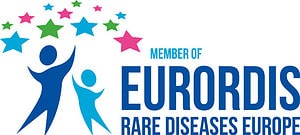Mitochondrial disease part of curriculum for Long Branch, NJ, seventh-graders
The seventh-graders at Long Branch (NJ) Middle School know about mitochondrialRelated to the mitochondria. disease thanks to a creative teacher.
Science teacher Caitlin Rudisill, in just her third year of teaching, said many teachers are doing activities around mitochondrial disease as part of next-generation science standards, which are aimed at better preparing American students in science and math.
Rudisill found the Mito lesson plan on BetterLesson.com. She credits teacher John Cereza for creating it. The lesson, called “The Organization of Life – From Organelles to Organism,” includes a project in which students write letters on behalf of MitoAction and UMDF to seek funds and raise awareness.
In this lesson, Rudisill teaches her students about organelles and cells. She talks about how problems at the cellular level can lead to bigger issues, like mitochondrial disease. “The students learned about the levels of organization in the body and how cells are the building blocks of life,” she said.
The students read an article and watch videos about people living with mitochondrial disease and learn how such a small malfunction of an organelle can cause such severe reactions throughout the whole body.
“The students were really intrigued,” Rudisill said. “Most had never heard of [mitochondrial disease].”
The lesson plan’s big idea states: By investigating the impact of mitochondrial disease on cells, students discover why cells matter.
The six sections of the lesson plan are quite amazing:
Warm-up: To measure background knowledge, students fill out a bridge map that correlates mitochondria to a furnace, with the relating factor being “provides energy.”
Engage: This lesson elicits students’ prior knowledge on cell theory, specifically that cells are the basic building block of living things.
Explore: Students discuss how a series of vocabulary words (organelle, cell, tissue, organ, organ system, organism) should be organized into a flow map.
Explain: Students gain a deeper understanding of levels of organization. Through videos, students are taken on a journey inside a living human body.
Elaborate: Students analyze the article, “The Invisible Disease That’s Killing Our Son,” which discusses the cause and effect of mitochondrial disease through the eyes of a young boy and his family. Through this article students are able to see a real-life application of what they’re learning: a story of cells and the organelles that constitute the systems of the human body.
Evaluation: To assess understanding of content, students are required to write a letter based on their “expertise” from the article they read. The assignment tells the students they have been hired by MitoAction and UMDF for Global Mitochondrial Disease Awareness Week to write an informative and persuasive letter to a potential donor whose money can get doctors and researchers closer to a possible cure.
“I am here to inform you about an invisible, dangerous disease that has no cure,” Emma Viegas starts her letter. “The disease is called mitochondrial disease and it is killing many. However, with your help, we can change this.”
Jonathan Rocha starts his letter by asking: “What are your fondest childhood memories? Maybe it’s the first time you rode your bike, or the times you played in your back yard? Now imagine you couldn’t do those things. … If you’ve ever heard of mitochondrial disease you know many people lose the ability to experience these great things. If you donate for this cause, you can help fund research to find out what causes this invisible disease.”
Zachary FitzGerald asks in his letter, “Did you know that every 30 minutes a child is born that will have mitochondrial disease before the age of 10! The serious disease kind of eats away at your energy until you don’t have enough to survive.”
Angel Dong’s letter states: “The disease is caused by the failure of the mitochondria, which is an organelle. The mitochondria creates energy and is the powerhouse of cells. The mitochondria are responsible for creating more than 90 percent of the energy needed by the body to sustain life and support growth. If the mitochondria fails, cell injury and even cell death follow.”
The disease slowly works its way from the mitochondria organelle, to the cell, to the tissue, to the organ and eventually the whole organ system, writes Jonathan. The mitochondria functions like batteries so “if this process is repeated throughout the body, whole systems begin to fail, and a person’s life is severely compromised.”
Evan McKnight’s letter states that symptoms may include loss of motor control, muscle weakness and pain, gastrointestinalGI disorders and swallowing difficulties, poor growth, cardiac disease, liver disease, diabetes, respiratory complications, seizuresEpisodes of abnormal electrical activity in the brain., visual or hearing problems, lactic acidosis, developmental delays, and susceptibility to infection.
“You may be thinking that this isn’t an important thing to give your money [to], but this is affecting a lot of kids and adults,” Emily Santos writes. “There are many little kids dying at a young age. The money will help scientists find a way to help the adults and kids get rid of this disease. What if your child had this disease and you had to find out that your 2-year-old is going to meet death at a young age? … Stop and donate and you will help a lot of people. STOP THE MITOCHONDRIAL DISEASE!”
Evan ends his letter: “If you donate money to this cause, this could make diagnosis for children that have no hope of living have an earlier diagnosis to get treatment to help them cope with this illness.”
Rachael Luna says that many families still have hope that their loved ones will one day live a healthy life.
“Many people already donate and you should, too. Not only will donating make you feel good, it will also make others feel good.”
Rudisill said this lesson has inspired some kids in her class to want to raise awareness and funds. Since the school year is almost over, those will be projects for next year.
A big thanks to Rudisill and her students for raising awareness!










